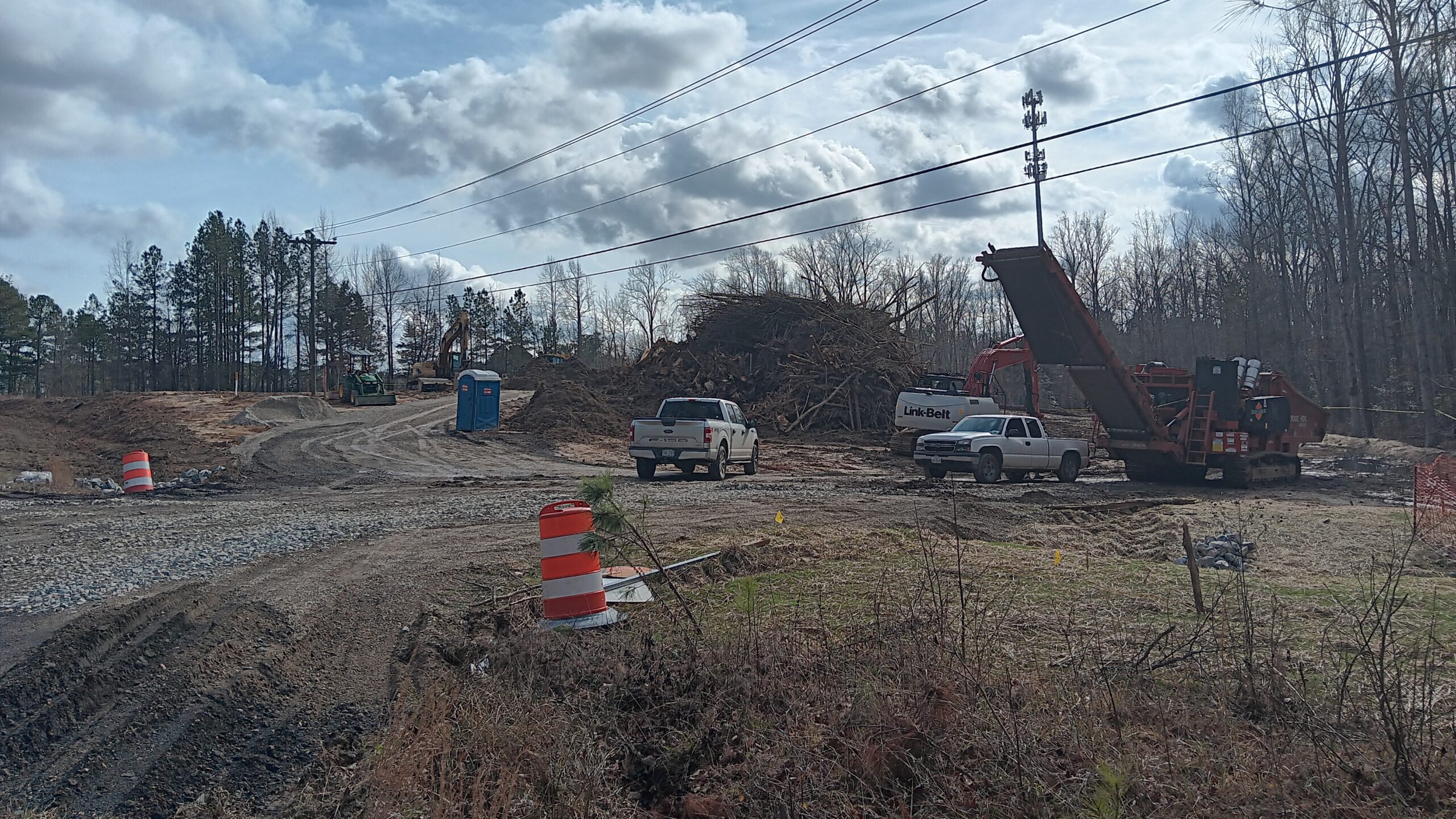Dozens of lower-income housing units are inbound to Chesterfield County.
Construction recently started on Old Hundred Trace, a 54-unit income-restricted apartment complex at 2140 Old Hundred Road.
The project is from Taft-Mills Group, a housing developer that does most of its work in and around its home market of Greenville, North Carolina. Taft-Mills is a subsidiary of Taft Family Ventures, an 82-year-old firm also based out of North Carolina that builds all sorts of projects, including luxury apartments, student housing, and industrial and office facilities.
Old Hundred Trace appears to be Taft-Mills Group’s first project in the Richmond region. The company did not respond to multiple requests for comment in recent months.
The development first got moving in mid-2022 when Taft-Mills Group filed plans with the county. Later that year the company received $900,000 in funding from the Virginia Housing Trust Fund, according to an announcement from the Virginia Department of Housing and Community Development.
Units at Old Hundred Trace will be available to individuals and families making less than 60% of the area median income.
Taft-Mills purchased the 13-acre project site in November for $1 million, county records show. The plot is located between Old Hundred Road’s intersections with Woolridge Road and Watermill Parkway, just west of where the Powhite Parkway begins.
Old Hundred Trace will be an L-shaped, 77,000-square-foot building reaching three stories. The complex also will include 108 surface parking spaces.
Chesterfield County approved the plan of development last summer, and in recent weeks the site began getting cleared.
Koontz Bryant Johnson Williams is listed as the development engineer and Donald C. Harwood Architect is the designer.
Dozens of lower-income housing units are inbound to Chesterfield County.
Construction recently started on Old Hundred Trace, a 54-unit income-restricted apartment complex at 2140 Old Hundred Road.
The project is from Taft-Mills Group, a housing developer that does most of its work in and around its home market of Greenville, North Carolina. Taft-Mills is a subsidiary of Taft Family Ventures, an 82-year-old firm also based out of North Carolina that builds all sorts of projects, including luxury apartments, student housing, and industrial and office facilities.
Old Hundred Trace appears to be Taft-Mills Group’s first project in the Richmond region. The company did not respond to multiple requests for comment in recent months.
The development first got moving in mid-2022 when Taft-Mills Group filed plans with the county. Later that year the company received $900,000 in funding from the Virginia Housing Trust Fund, according to an announcement from the Virginia Department of Housing and Community Development.
Units at Old Hundred Trace will be available to individuals and families making less than 60% of the area median income.
Taft-Mills purchased the 13-acre project site in November for $1 million, county records show. The plot is located between Old Hundred Road’s intersections with Woolridge Road and Watermill Parkway, just west of where the Powhite Parkway begins.
Old Hundred Trace will be an L-shaped, 77,000-square-foot building reaching three stories. The complex also will include 108 surface parking spaces.
Chesterfield County approved the plan of development last summer, and in recent weeks the site began getting cleared.
Koontz Bryant Johnson Williams is listed as the development engineer and Donald C. Harwood Architect is the designer.





That site has been on the market for the last 15 or so years. I never tried to sell it personally and always wondered why its disposition lingered. I’m glad to see a pocket of income restricted housing in an area of the highest incomes in the region, the first perhaps since Eagle built Creekpoint as a 4 percent deal. Sam Worley and I sold that site.
As long as its not in “your backyard ” right Bruce? Because its going to badly impact those who live near it negatively. Horrible location on a raceway called Old Hundred, potential to overcrowd the schools, lower property values of homes nearby just to name a few. And that whole area is practically swamp land. They should have found a better location with more land.
im trying to figure out how the deal works from the renter’s perspective. is the rent ratio’d from the git go? is the fund tapped per renter to cover for the long term or did it pay for the construction and the subsidized aspect was for the project as a whole…